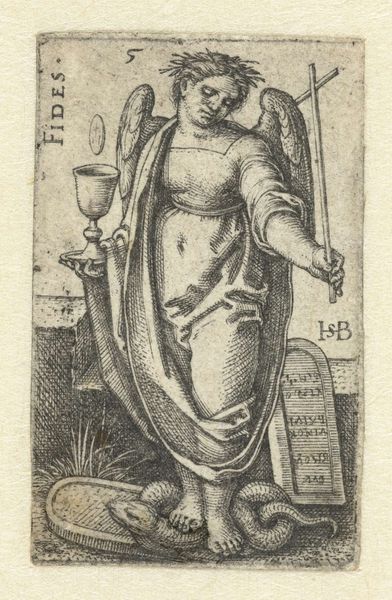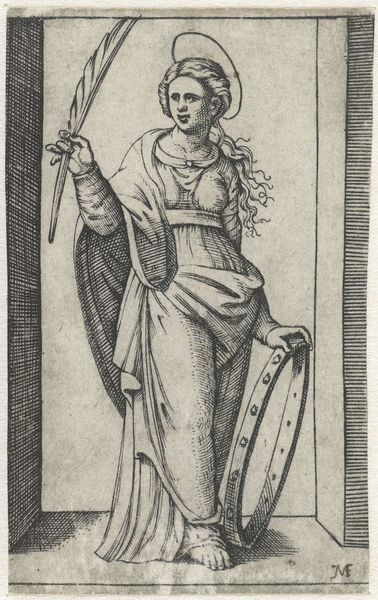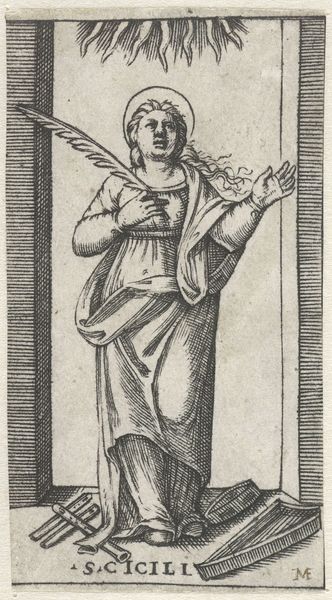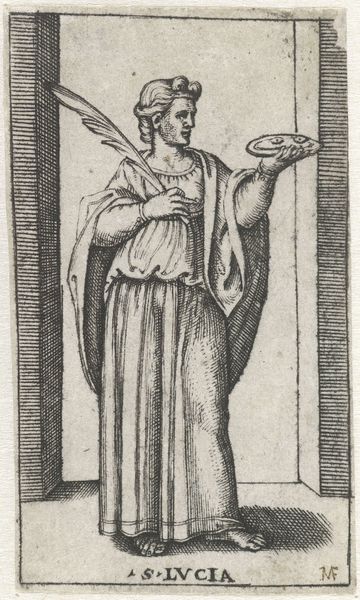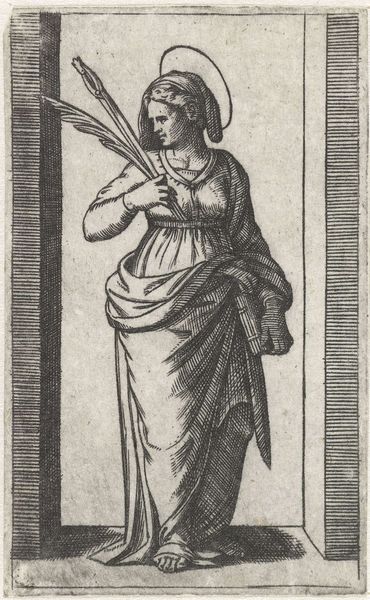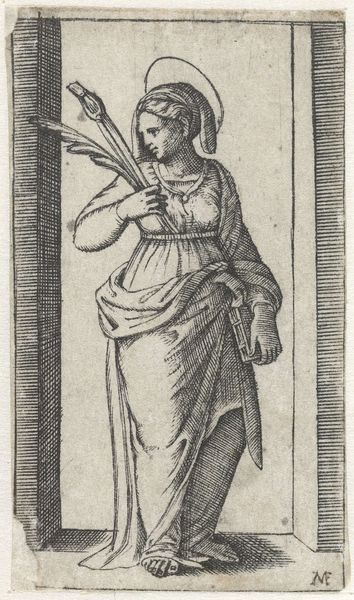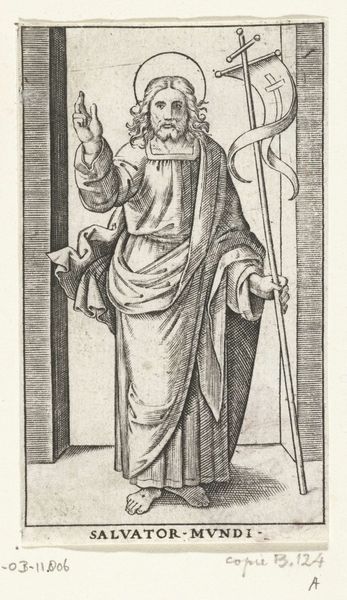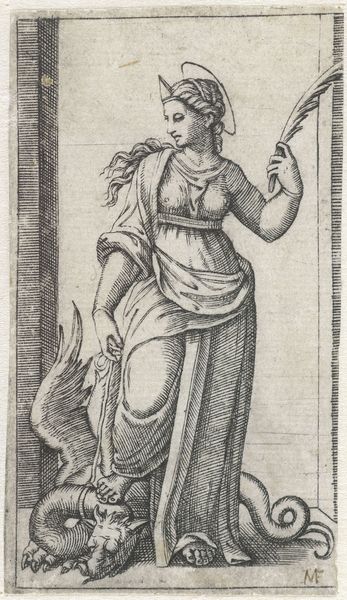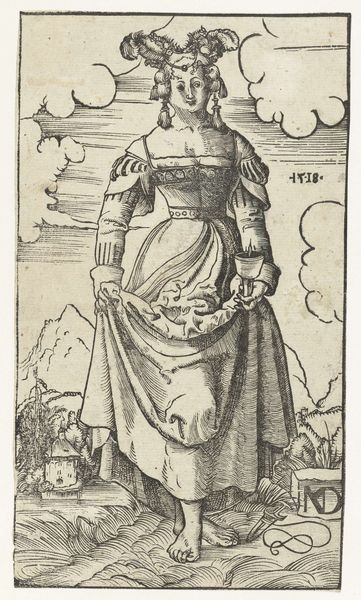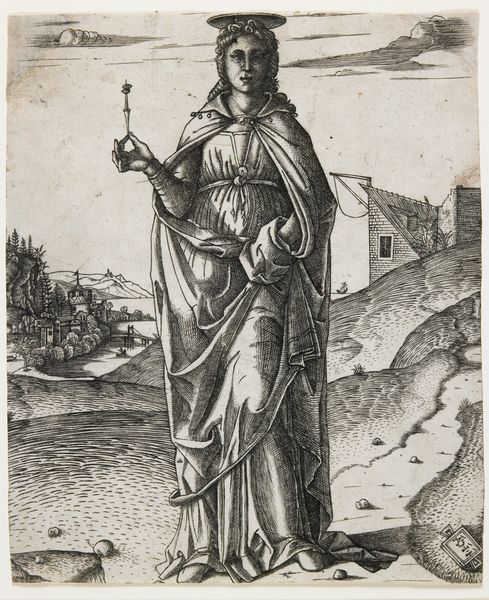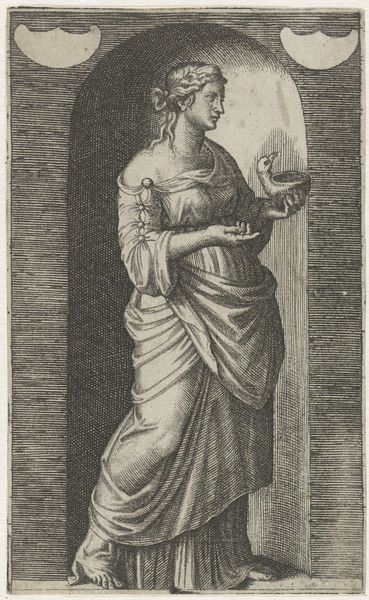
print, etching, engraving
#
allegory
# print
#
etching
#
figuration
#
11_renaissance
#
portrait drawing
#
northern-renaissance
#
engraving
Copyright: National Gallery of Art: CC0 1.0
Editor: Here we have a print, probably an engraving or etching, called "Fides," by Sebald Beham. I am struck by the figure's solemn expression and the textures achieved with what must have been very precise, repetitive lines. How should we interpret this work? Curator: Notice how the engraving technique itself—the laborious, repetitive act of carving those lines—speaks directly to the concept of "Fides," or Faith. It wasn’t quickly produced. Consider the material constraints, and Beham's skilled labor turning base metals into a valuable, reproducible image. Where does that labor and materiality situate it between “fine art” and craft? Editor: That’s fascinating! I hadn’t thought about the connection between the act of creation and the subject. And the material matters in the dissemination of the imagery of the faith, too. What’s the relationship, then, between the luxury of the image, available only to a wealthy, literate few, versus the intended symbolism for a larger community? Curator: Precisely. Look at the objects accompanying the figure: the chalice, the tablets. How might the market for these prints shape the way these religious symbols are presented and consumed? Also, observe the snake under her feet; is this meant to be consumed as an allegory for suppressing your faith, or promoting an image of faith in a competitive environment. What sort of statements are the materials, production process and intended audience saying about 16th century views on faith. Editor: This gives me a lot to think about. Seeing the print as a product of both devotion and market forces really changes how I understand it. Thanks! Curator: Indeed! Recognizing the intersection of materials, labor, and consumption allows us a deeper understanding of the art and its historical moment.
Comments
No comments
Be the first to comment and join the conversation on the ultimate creative platform.
